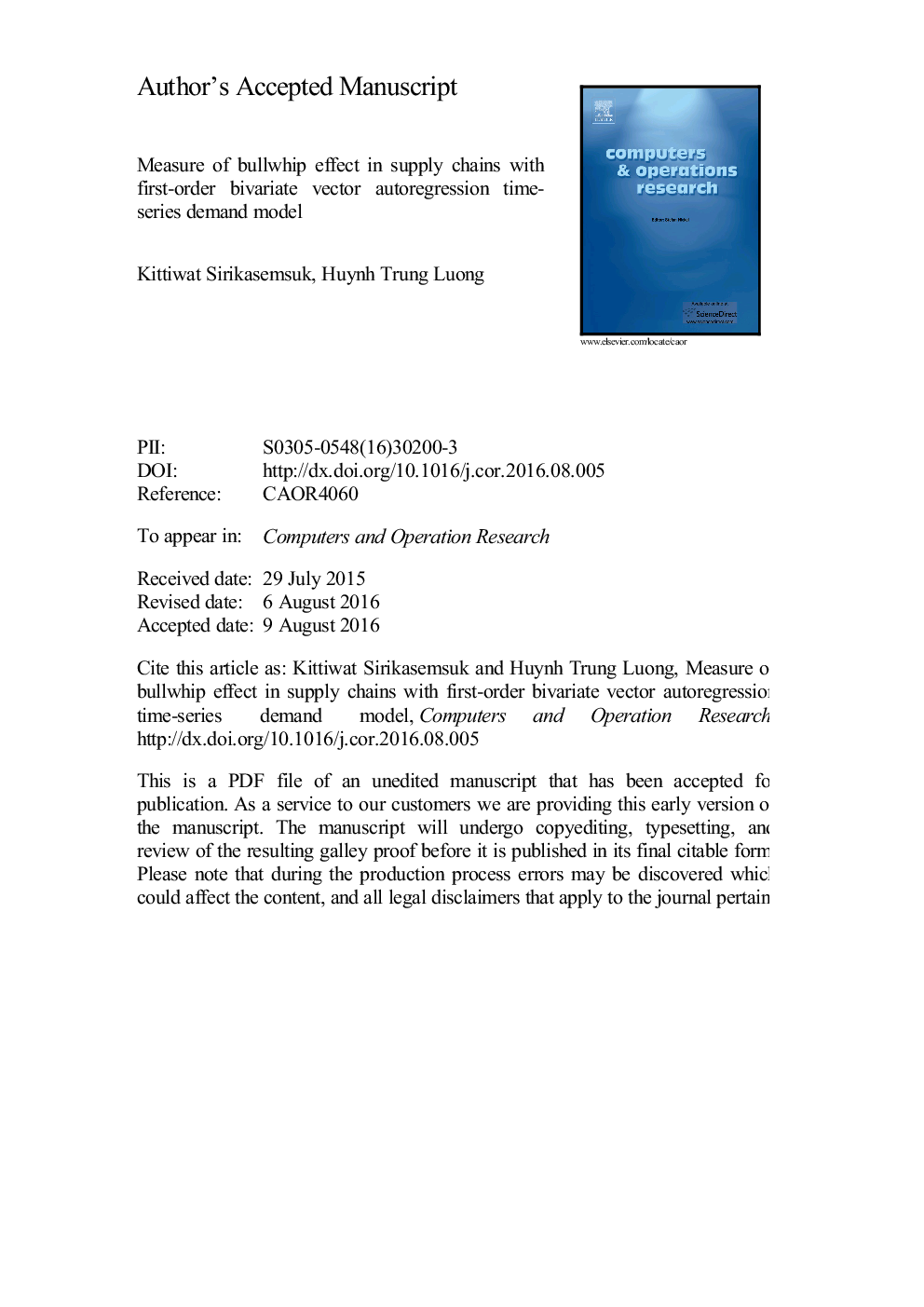ترجمه فارسی عنوان مقاله
اندازه گیری اثرات شلاق چرمی در زنجیره های عرضه با مدل تقاضای سری زمانی اتورگرسیون بردار دوبعدی
عنوان انگلیسی
Measure of bullwhip effect in supply chains with first-order bivariate vector autoregression time-series demand model
| کد مقاله | سال انتشار | تعداد صفحات مقاله انگلیسی |
|---|---|---|
| 162136 | 2017 | 33 صفحه PDF |
منبع

Publisher : Elsevier - Science Direct (الزویر - ساینس دایرکت)
Journal : Computers & Operations Research, Volume 78, February 2017, Pages 59-79

